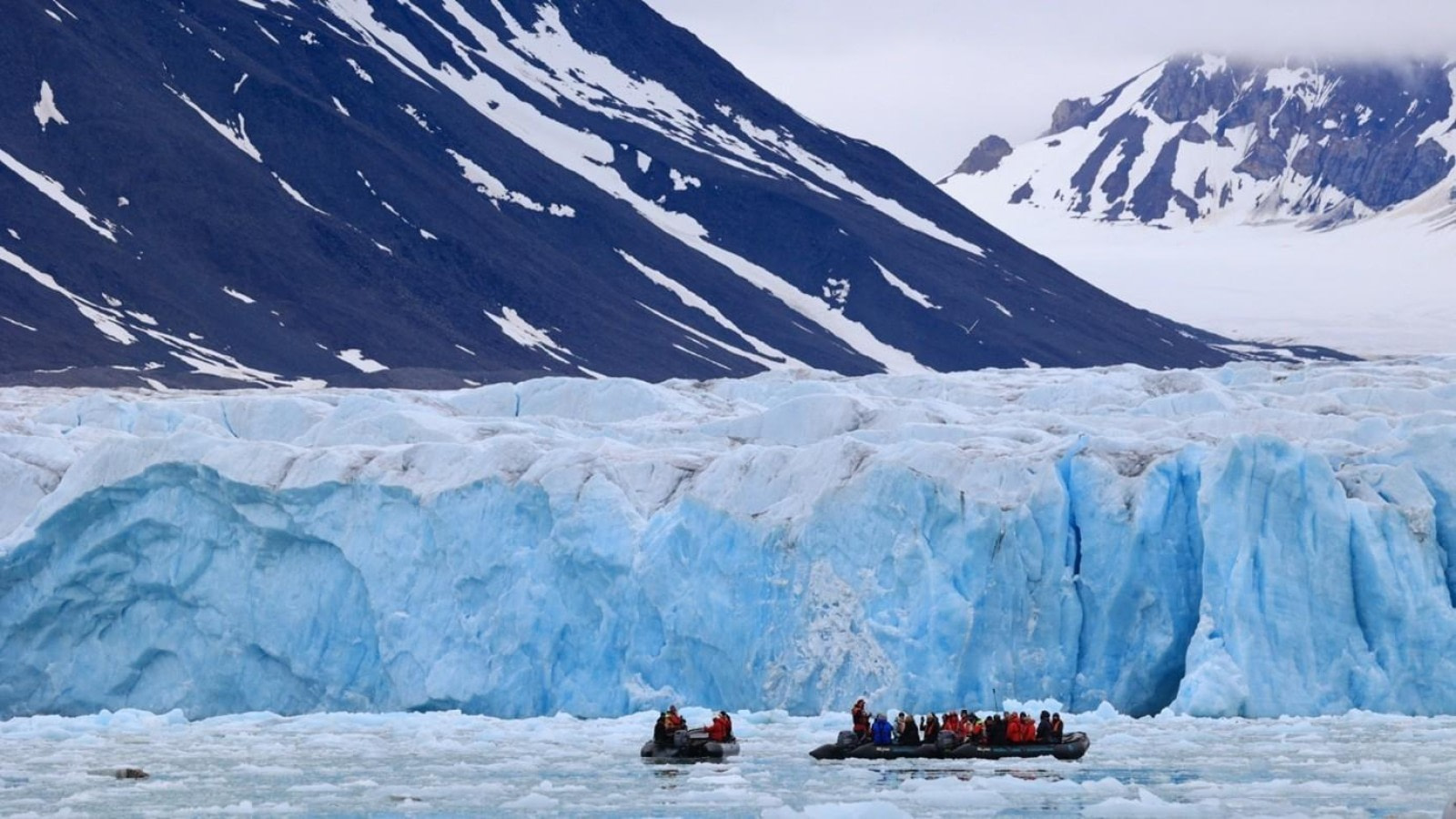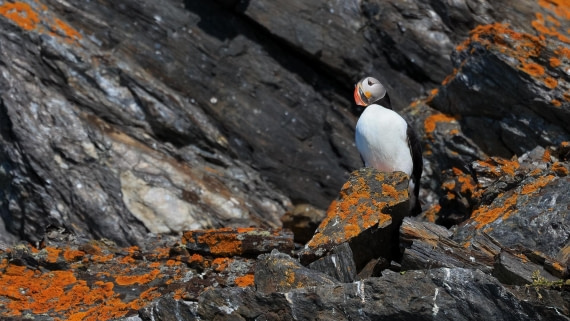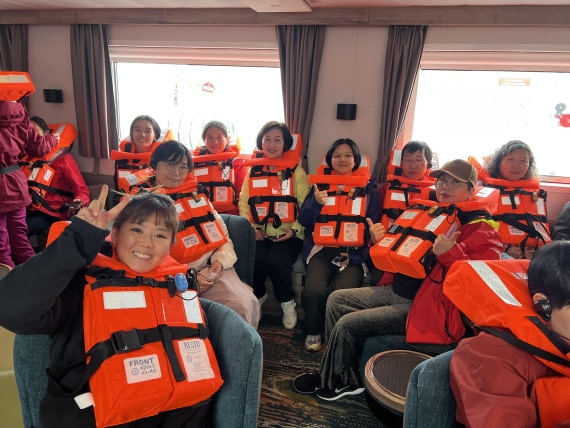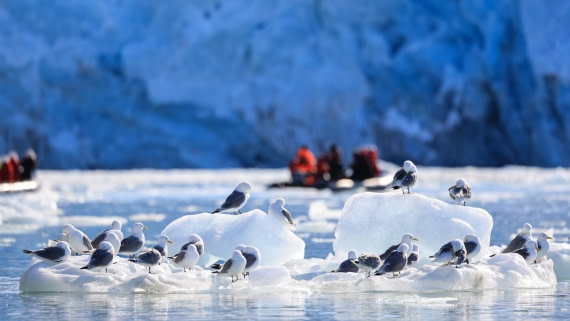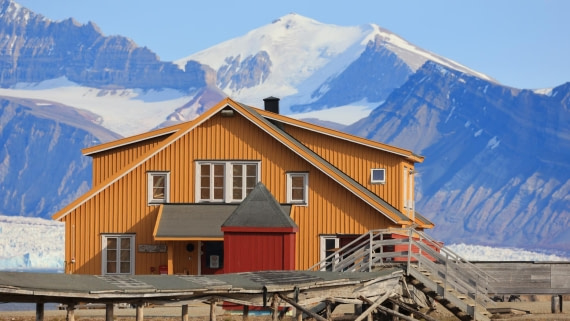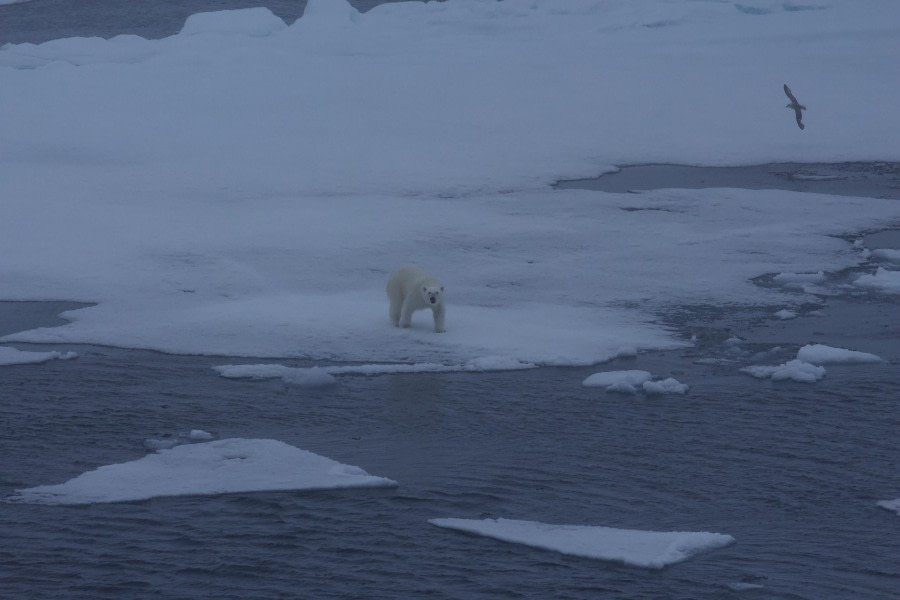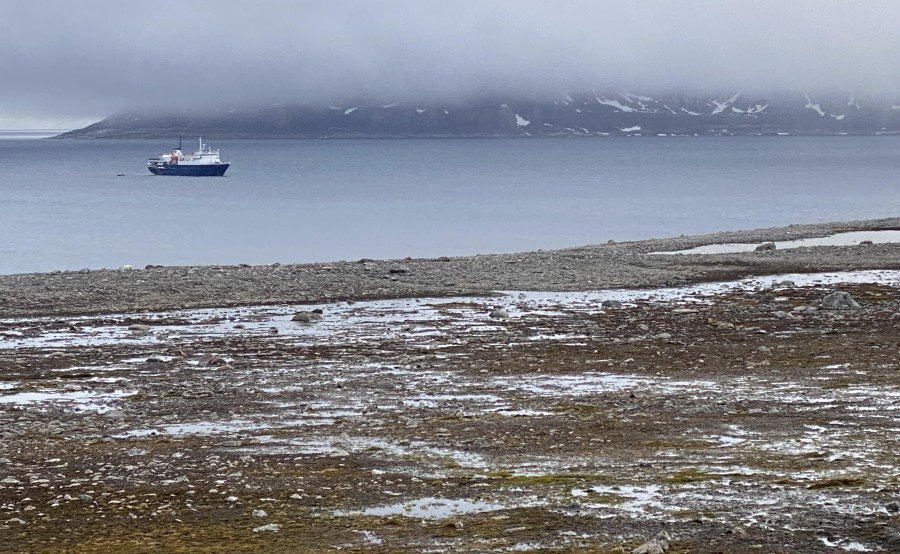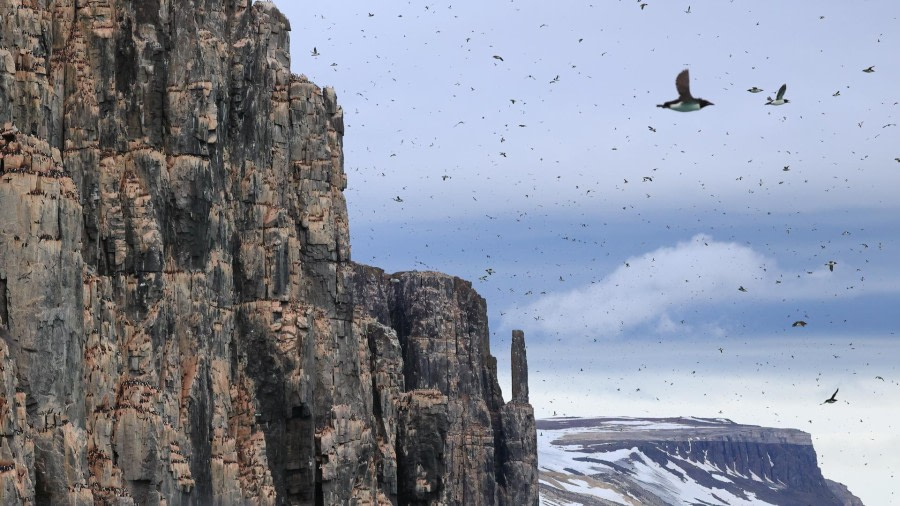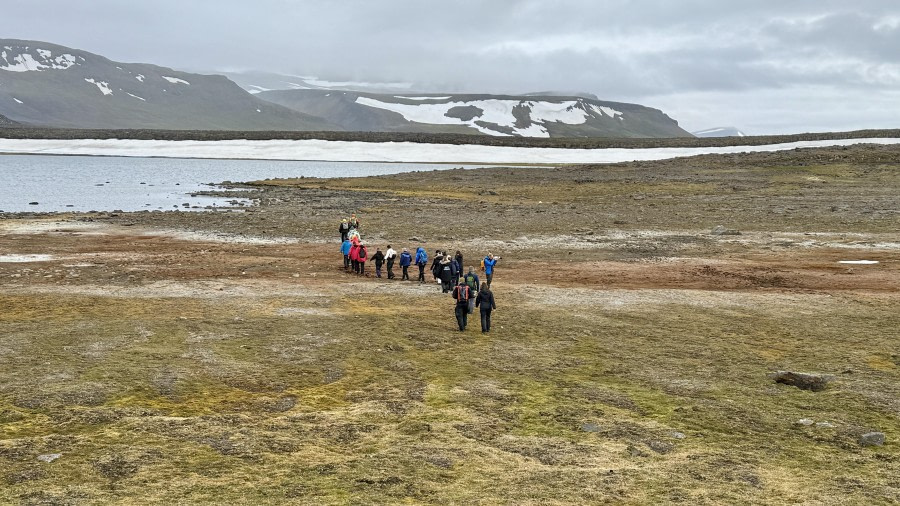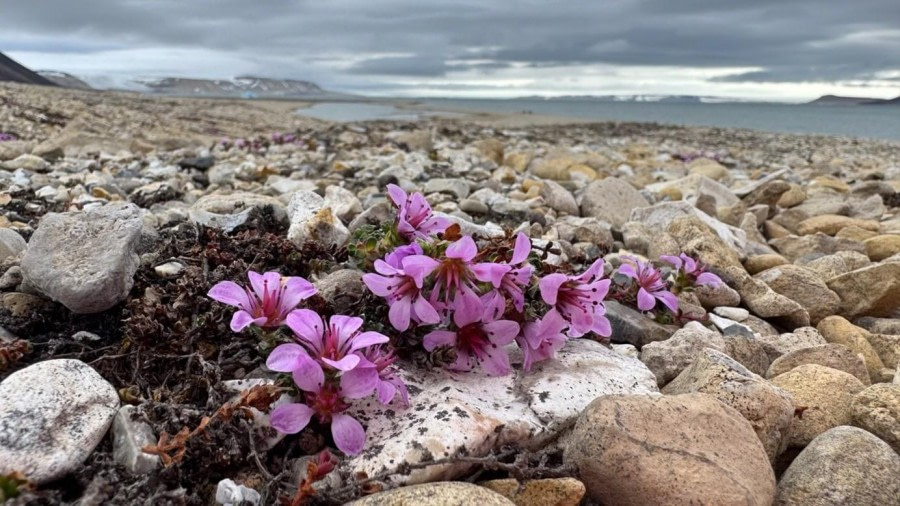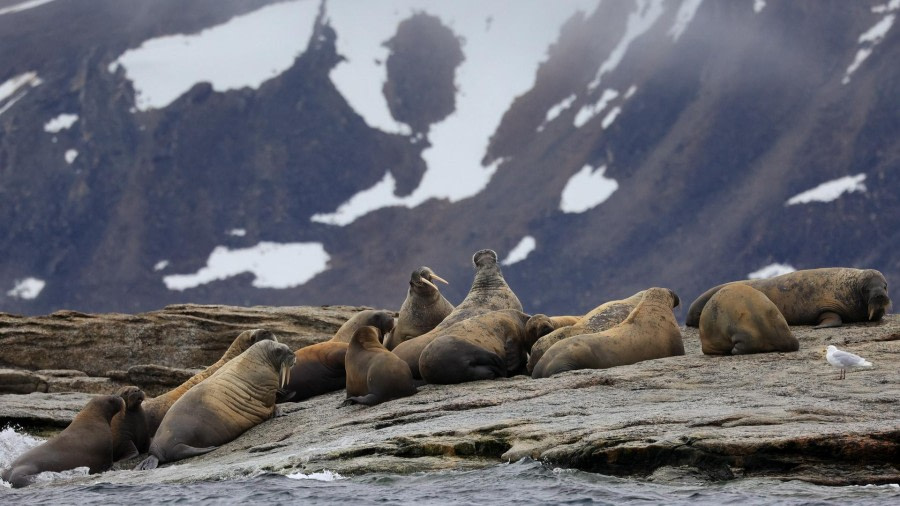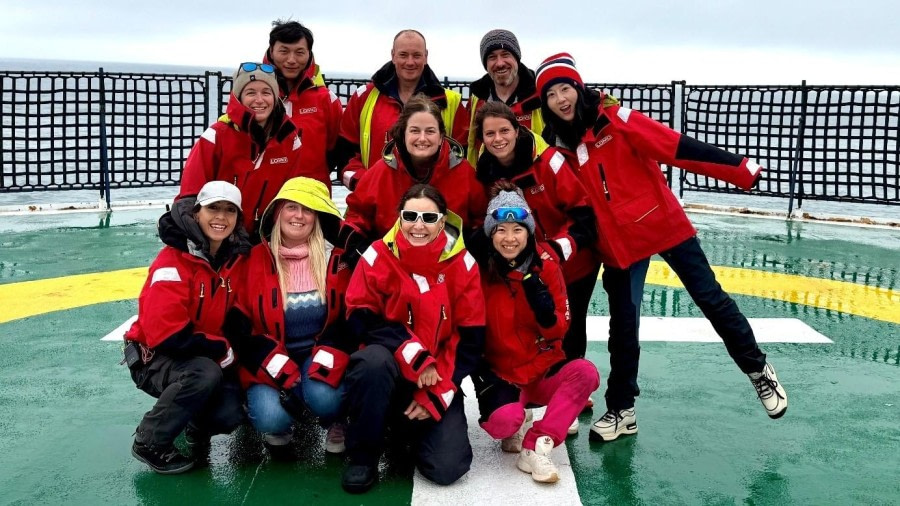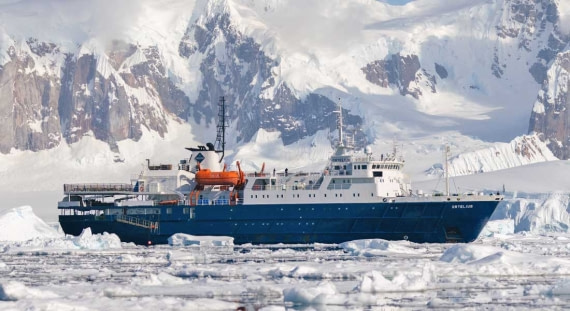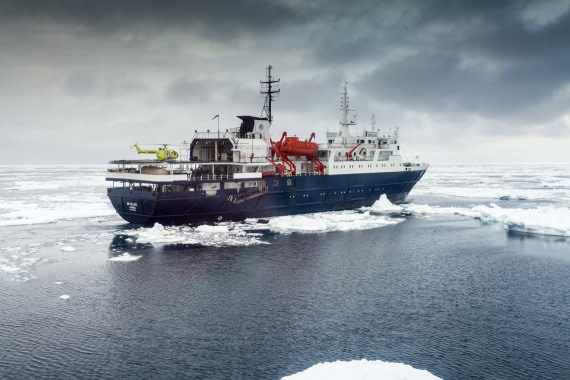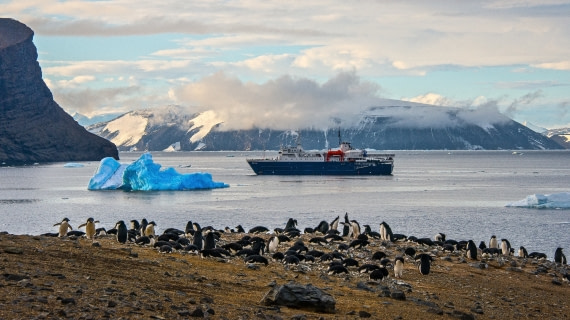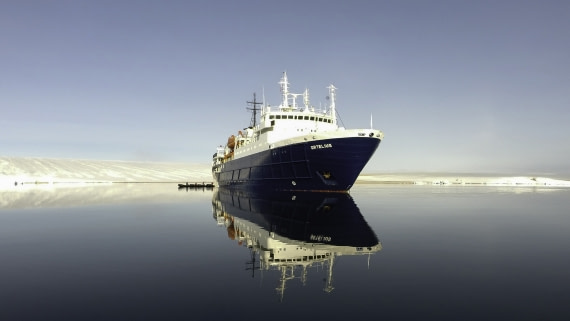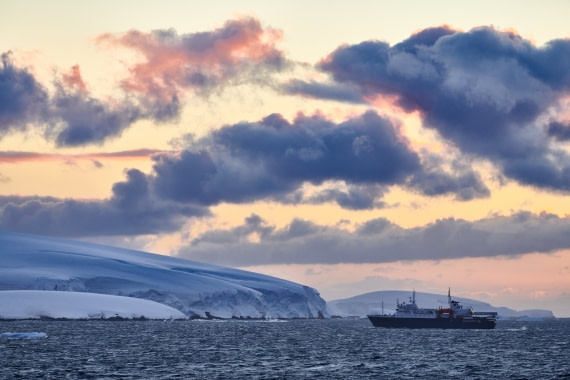| Date: | 21.07.2025 |
| Position: | 78° 09’ N / 012° 10’ E |
| Wind: | SE 2 km/h |
| Weather: | Cloudy |
| Air Temperature: | +7.2 |
Today will be remembered in a different way. We have traveled from different parts of the world, speaking different languages, but bringing with us the hope of enjoying a few unforgettable days aboard the MV Ortelius.
At 4pm, we were all ready to board the ship on the main pier and start our amazing journey.
Just after 6:00 PM, the ship set sailing leaving Longyearbyen behind us and almost immediately we were called to receive safety instructions that would be very useful for the following days. As MV Ortelius slowly pulled away from the harbour, northern fulmars joined us, effortlessly gliding alongside the ship. The moment of departure had truly arrived, and a shared sense of excitement buzzed in the crisp Arctic air. The sense of departure was real now, and excitement filled the air.
After the mandatory class and practice in front of the lifeboats, we left the life jackets in our cabins and went to the bar where we received the official welcome from Captain Remet and our Expedition Leader, Adam. Champagne or orange juice set the stage to enjoy the little delicacies that the chefs prepared on board.
Then we started getting to know each other, creating new friendships with people we had never seen before and with whom we would share great Arctic experiences.
The dinner pleasantly surprised us, organized by the Manager of the Hotel, William. The restaurant looked magnificent and the waiters attended to us with a unique friendliness and charisma.
A voice announced that you will be called deck by deck to go to the Lecture Room on Deck 3 to collect your Muck Boots, ready to start early in the morning.
Just as we were starting to settle into the rhythm of ship life, excitement struck again. Two male sperm whales—and not long after, a minke whale—were spotted off the bow. We all rushed outside, hearts pounding, and watched in awe as these massive creatures surfaced gracefully in the distance. It was an unforgettable, magical welcome to the adventures ahead.
We went to rest, dreaming of where we would wake up tomorrow, what landscapes would accumulate in our retinas, and how we would discover the Arctic fauna.
